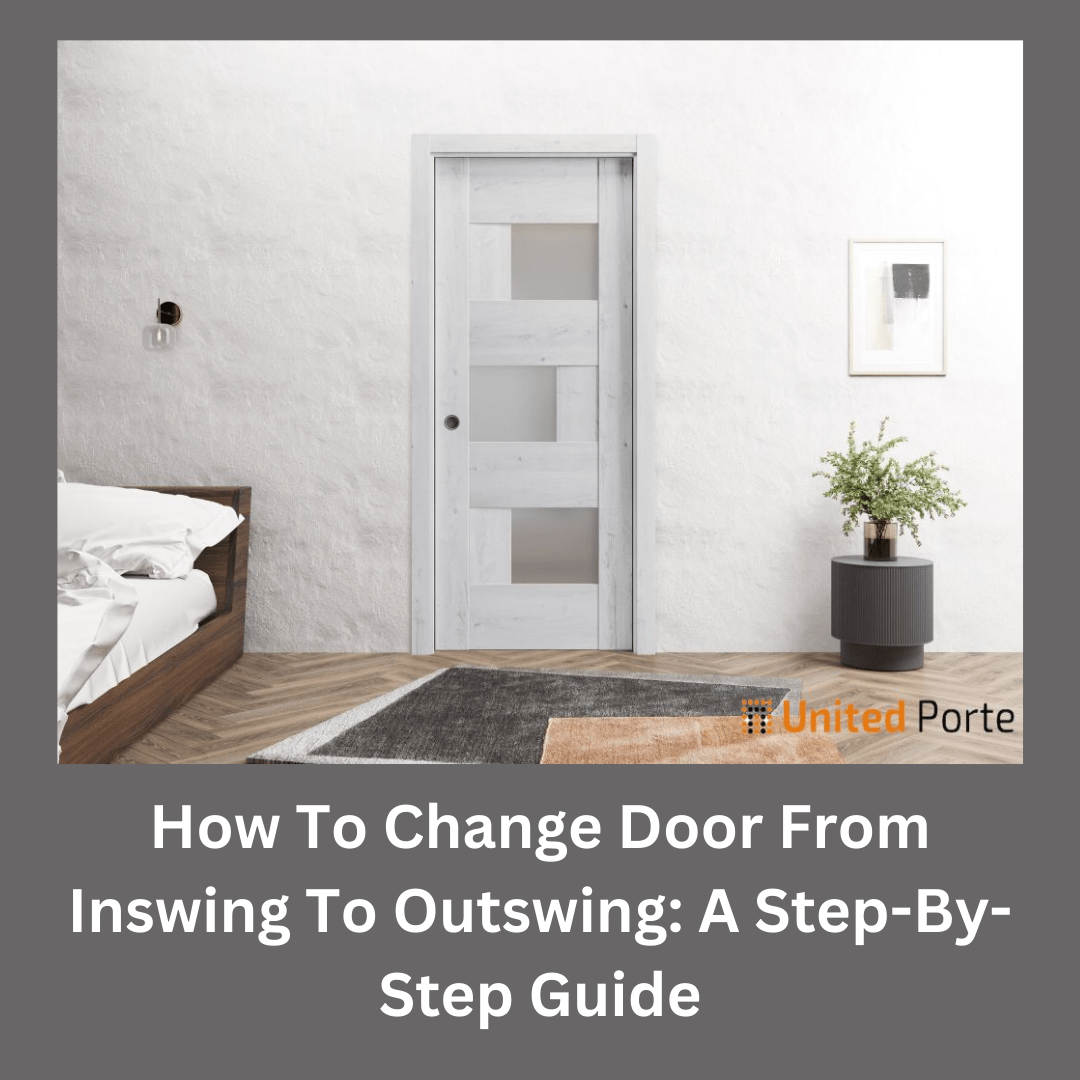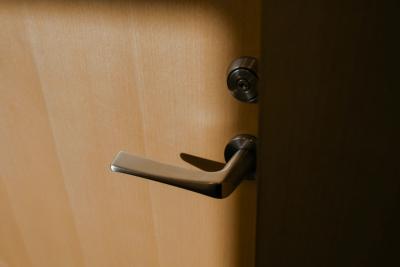Inswing and outswing doors serve multiple functions in a home or building, including enhancing security, curb appeal, and protection from harsh weather elements. However, the former consumes a lot of space and can complicate accessibility.
Fortunately, you can solve this problem by changing the door’s swing and still enjoy seamless handling and basic functionality. Moreover, when you contemplate it, by reversing the swing of your interior doors from inward to outward, you can also rearrange the space to match your dream design and aesthetic preferences.
Regardless of your end goal, you can change interior door from inswing to outswing using simple DIY steps, especially if you know how to make the required structural changes in the frame. In this guide, you’ll learn how to reverse a door swing like a pro, even if you’re not a professional carpenter or contractor. Keep reading to learn more.
What are Inswing and Outswing Doors?
As the name suggests, inswing doors open inwards towards the interior of the room or building. The door's hinges are usually installed facing the interior room, which prevents them from being visible when the door is shut. Moreover, the doorframe of a swing door is installed on the exterior to prevent the door from pulling open.
On the other hand, outswing doors are the inverse of their inswing counterparts. It takes a pull to open them, where they swing outwards from the interior of the room or building. The hinges and frames are installed on the exterior side of the room so that the door doesn’t swing inside when someone attempts to push it.
Reasons for Changing the Swing Direction
There are various reasons that can prompt a homeowner to reverse a door swing from inwards to outwards, including:
- Accessibility: an outward-swinging door can help enhance accessibility, especially when a resident of the building faces mobility limitations. By swinging outwards, the entrance creates an easier pathway free of barriers.
- Space optimization: reversing your current entrance setup to an outswing interior door can help maximize the utility of your space since the new installation won't interfere with room functionality, traffic flow, or furniture arrangement.
- Building code requirements: some local jurisdictions might require buildings within a certain commercial or residential area to swing in a specific direction for safety and accessibility purposes.
- Emergency and safety concerns: changing door swing can be advantageous for safety and emergency egress. For instance, an outswing opening mechanism provides a clear pathway for evacuation and prevents interior debris from blocking access when occupants are trapped inside.
A Step-By-Step Guide to Changing Door from Inswing to Outswing
Now you have all the reasons to convert the inswing door to outswing, where do you begin? First, you’ll need to gather specific carpentry tools that will make your work easier. They include new flip door hinges, wood putty, sandpaper, a power drill or driver, a ruler, a hacksaw, paint, and a paintbrush. After that, follow these steps:
Assessing your door and frame
Start by taking the width and height measurements of your door to ensure that it fits correctly. For exterior doors, you would want to assess the frame for any damages that could interfere with the swing direction after re-installation. After that, determine the appropriate swing direction while factoring in space, safety, and accessibility.
Preparing for the door swing change
At this stage, unscrew the hinges from the frame to remove the door and set aside functional hardware for later use. Also, it will help if you create new recesses on the opposite side of the frame to guarantee its level and security. This will also help switch door hinge side.
Adjusting the frame and hinges
The next step involves adjusting the frame by filling old hinge recesses using a wood filler or any other suitable material at your disposal. As the filled sections dry, create hinge marks on the frame and chisel them before fastening the new hinges with a screw.
Installing the door in the new swing direction
Now it’s time to switch door swings, and this is where the real job is. If you have a new egress bought from an online doors shop, you would want to measure and trim it as much as needed to align it with the newly drilled recesses or hinge positions. After that, ask another person to lend help lifting the door and positioning it into the frame. You can insert shims to achieve an accurate level and plumb installation before fastening the hinges with the screw.
Reinstalling the hardware
Reinstall the hardware, including the strike plate and latch, to ensure proper functionality and alignment.
Testing the door and final touches
Lastly, you’ll need to conduct a test to determine if you really know how to make a door swing out instead of in. This means opening and shutting the door to test for smooth operation. You can also install weatherstripping for insulation or weatherproofing purposes.
Tips and Recommendations for Changing Door Swing Direction
Now that you understand how to change the swing of a door, what are some of the considerations to have in mind before making this move? For starters, it will help if you:
- Choose the right door: besides planning carefully, be keen to use a door that can serve the outswing purpose—buy from a reputable vendor, such as United Porte. This is because some designs are specifically made to swing inwards.
- Take precautions for security: ensure that the new swing direction doesn't jeopardize the security posture of your entryway, and consult a locksmith as much as needed.
- Comply with building codes and regulations: ensure the new swing configuration is in line with the local building codes and standards, especially if you reside in a highly regulated commercial or residential area.
- Pay attention to obstruction and clearance: be mindful of possible obstructions that can interfere with clearance, including walls, fixtures, or furniture, to ensure smooth operation.
- Ask professional help whenever needed: while you can change door from inswing to outswing using DIY resources, sometimes it's more prudent to seek professional assistance. This is especially true when advanced modifications, tools, and skills are needed to get the job done.
Summary: Can Inswing Door Be Used for Outswing?
It's possible to reverse an inswing door to outswing, and this comes with a ton of benefits, including more safety and convenience. This is not to mention the extra space that you'll create for further DIY designing and decoration. Leverage this guide to get started, and don't hesitate to seek professional help whenever you're stuck.





